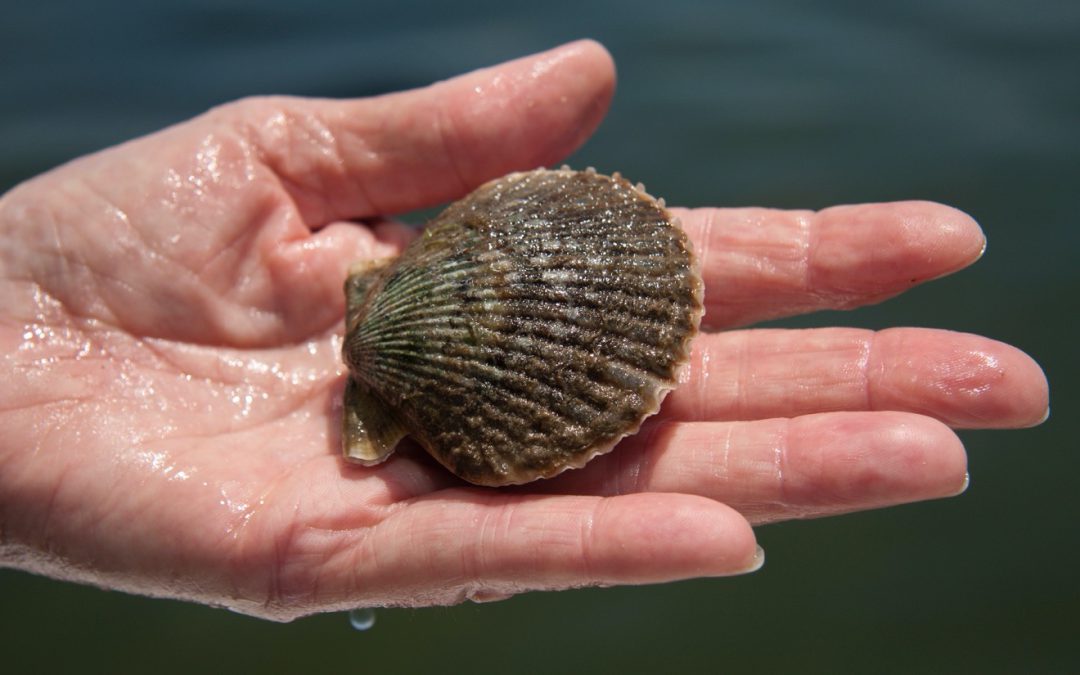
Bay Scallop Restoration Program Needs Volunteers
Special to the Panama City News Herald
L. Scott Jackson
UF/IFAS Extension Bay County / Florida Sea Grant
Ray Bodrey
UF/IFAS Extension Gulf County / Florida Sea Grant
Do you live in Bay, Gulf, and Franklin County? We need your help! Scallop Sitters is one of our cooperative volunteer programs with Florida Fish and Wildlife (FWC).
Historically, populations of bay scallops were in large numbers and able to support fisheries across many North Florida bays, including St Andrew Bay, St Joe Bay, and Alligator Harbor (Franklin County). Consecutive years of poor environmental conditions, habitat loss, and general “bad luck” resulted in poor annual production and caused the scallop fishery to close. Bay scallops are a short-lived species growing from babies to spawning adults and dying in about a year. Scallop populations can recover quickly when growing conditions are good and can decline dramatically when growing conditions are bad.
An opportunity to jump start restoration of North Florida’s bay scallops came in 2011. Using funding from the Deepwater Horizon Oil Spill, a multi-county scallop restoration program was proposed and eventually set up in 2016. Scientists with FWC use hatchery reared scallops obtained from parents or broodstock from local bays to grow them in mass to increase the number of spawning adults near critical seagrass habitat.
FWC also created another program where volunteers can help with restoration called “Scallop Sitters” in 2018 and invited UF/IFAS Extension to help manage the volunteer part of the program in 2019 which led to targeted efforts in Gulf and Bay Counties.
Giving scallops a helping hand, “Scallop Sitters” work with UF/IFAS Extension, Florida Sea Grant, and FWC restoration scientists by cleaning scallops and checking salinity once a month from June through January. Photo by Tyler Jones, UF/IFAS Extension and Florida Sea Grant.
After the 2020 hiatus due to COVID-19, the program boasted nearly 100 volunteers for the 2021 campaign. UF/IFAS Extension is once again partnering with FWC in Bay and Gulf and Franklin Counties. Despite challenges with rainfall, stormwater runoff, and low salinity, our Scallop Sitter volunteers have supplied valuable information to researchers and restoration efforts, especially in these beginning years of our program. Scallop Sitters collect useful information about salinities throughout the target bays. But the bulk of the impact comes with keeping a close watch on their scallops. The scallops maintained by their sitters have a better chance of a successful spawn when the time is right.
A “Scallop Sitter” cage ready for placement near seagrasses. The cages are restoration tools used to produce baby scallops during the annual growing cycle. Photo by L. Scott Jackson.
So, what does a Scallop Sitter do? Volunteers manage predator exclusion cages of scallops, which are either placed in the bay or by a dock. The cages supply a safe environment for the scallops to live and reproduce, and in turn repopulate the bays. Volunteers make monthly visits from June until January to their assigned cages where they clean scallops removing attached barnacles and other potential problem organisms. Scallop Sitters watch the mortality rate and collect salinity data which helps figure out restoration goals and success in targeted areas.
You are invited! Become a Scallop Sitter
- Register
Franklin County https://bit.ly/franklinscallopsitter22
Gulf County https://bit.ly/gulfscallopsitter22
Bay County https://bit.ly/bayscallopsitter22
- You will be sent a registration survey via email, a virtual workshop link, and an invite to our Northwest Florida Scallop Sitter Facebook Group.
- View a virtual workshop or you can attend our Kickoff Reception 9:30 AM before picking up your scallops and supplies. See the pick-up schedule below.
- Pick-up supplies and scallops:
Franklin County: June 2nd Kickoff Reception 9:30AM, Pick-up 10:00AM – 1:00 PM (Eastern)
Gulf County: June 9th Kickoff Reception 9:30AM, Pick-up 10:00AM – 1:00 PM (Eastern)
Bay County: June 16th Kickoff Reception 9:30AM, Pick-up 10:00AM – 1:00 PM (Central)
An Equal Opportunity Institution. UF/IFAS Extension, University of Florida, Institute of Food and Agricultural Sciences, Andra Johnson, Dean for UF/IFAS Extension. Single copies of UF/IFAS Extension publications (excluding 4-H and youth publications) are available free to Florida residents from county UF/IFAS Extension offices.



